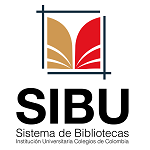SIBU - SISTEMAS DE BIBLIOTECAS UNICOC
Evaluación del Comportamiento Tisular en Implantes de Conexión Interna tipo Cono Morse.
por Diana Marcela Fontecha Saavedra .
.
Editor: Bogotá DC (Colombia) Institución Universitaria Colegios de Colombia –UNICOC 2018Descripción: 2 CD.Tema(s): Odontología / Periodoncia - Tesis y Disertaciones Academicas| Tipo de ítem | Ubicación | Signatura topográfica | Estado | Notas | Fecha de vencimiento | Código de barras | Reserva de ejemplares |
|---|---|---|---|---|---|---|---|
 Trabajo de Grado Trabajo de Grado |
Bogotá (Dr. David Ordóñez Rueda) - Campus Norte
Campus Norte Biblioteca de la Institución Universitaria Colegios de Colombia |
T.O.Pe.0085 (Navegar estantería) | Prestado a 51848275 Sandra Elizabeth Aguilera Rojas | 2 Cd´s, 2 Tesis, 2 Articulos | 12/31/2024 | T.O.Pe.0085 |
Navegando Bogotá (Dr. David Ordóñez Rueda) - Campus Norte Estantes Cerrar el navegador de estanterías
Incluye tabla de contenido y referencias bibliográficas
Asesor Científico: Dr. Oscar Iván Tocarruncho Pinzón ; Directora Centro de Investigación: Sandra Elizabeth Aguilera Rojas; Asesor(a) Metodológica: Dr.: Camilo Novoa; Asesor(a) estadístico: Dr.: Edgar Ibañez.
RESUMEN.
OBJETIVO Evaluar clínica y radiográficamente el comportamiento de tejidos periimplantares en implantes con conexión tipo cono morse seguido del procedimiento quirúrgico. MÉTODO La investigación observacional descriptivo serie de casos incluyó 11 pacientes de la clínica de periodoncia de UNICOC Bogotá seleccionadas por conveniencia, en los cuales se colocaron 14 implantes de la casa comercial MegaGen, las variables analizadas fueron Edad, género, estrato, movilidad del implante, supuración, índice gingival, de placa bacteriana e inflamación gingival, en un periodo de tiempo de 3 meses, los datos obtenidos se diligenciaron en una tabla de Excel. La investigación fue aprobada por el comité de ética y clasificado con riesgo mayor que el mínimo. RESULTADOS los implantes fueron posicionados en la zona posterior del maxilar o mandíbula, de éstos 2 fueron ubicados en el maxilar y los 12 restantes en la mandíbula, entre las complicaciones más frecuentes a los 8 días de seguimiento fueron dolor seguido de inflamación y desalojo del tornillo de cicatrización; el índice gingival y de placa bacteriana fueron evaluados a los 8, 15, 30 y 90 días después de la colocación de los implantes. CONCLUSIONES El índice de placa bacteriana, índice gingival e inflamación gingival mostraron una disminución en el porcentaje a través de los controles clínicos realizados, este avance se observó después de realizar instrucción en higiene oral a cada uno de los pacientes.
SUMMARY.
OBJECTIVE: To evaluate clinically and radiographically the behavior of peri-implant tissues in implants with a morse type cone connection followed by the surgical procedure. METHOD: The descriptive observational research series of cases included 11 patients from the periodical clinic of UNICOC Bogotá selected at research convenience, in which 14 implants of the MegaGen commercial house were placed. The variables analyzed were Age, gender, socio-economic level, mobility of the implant, suppuration, gingival index, bacterial plaque and gingival inflammation, in a period of 3 months, the data obtained were filled out in an Excel chart. The research was approved by the ethics committee and classified within a risk range greater than the minimum. RESULTS: the implants were placed and positioned in the posterior area of the mandible or lower jawbone. Out of these, 2 were located in the maxilla and the remaining 12 in the jaw. Among the most frequent complications at 8 days of follow-up were: pain followed by inflammation and eviction of the screw of healing; the gingival and plaque index were evaluated at 8, 15, 30 and 90 days after implant placement. CONCLUSIONS: The bacterial plaque index, gingival index and gingival inflammation showed a decrease in the percentage throughout the clinical controls performed, this advance was observed after performing instruction in oral hygiene to each of the patients.
PALABRAS CLAVES Altura ósea, complicaciones, implantes, radiografía, pérdida ósea, periapical, tejido blando, tomografía.; KEY WORDS Bone height, bone loss, complications, implants, periapical radiography, , soft tissue, tomography.
© 2014 UNICOC | Institución Universitaria Colegios de Colombia - UNICOC
Bogotá D.C. Autopista Norte Km. 20. Teléfono:(571)6683535
Cali: Calle 13 Norte No. 3N-13. Teléfono: (572)6608887




